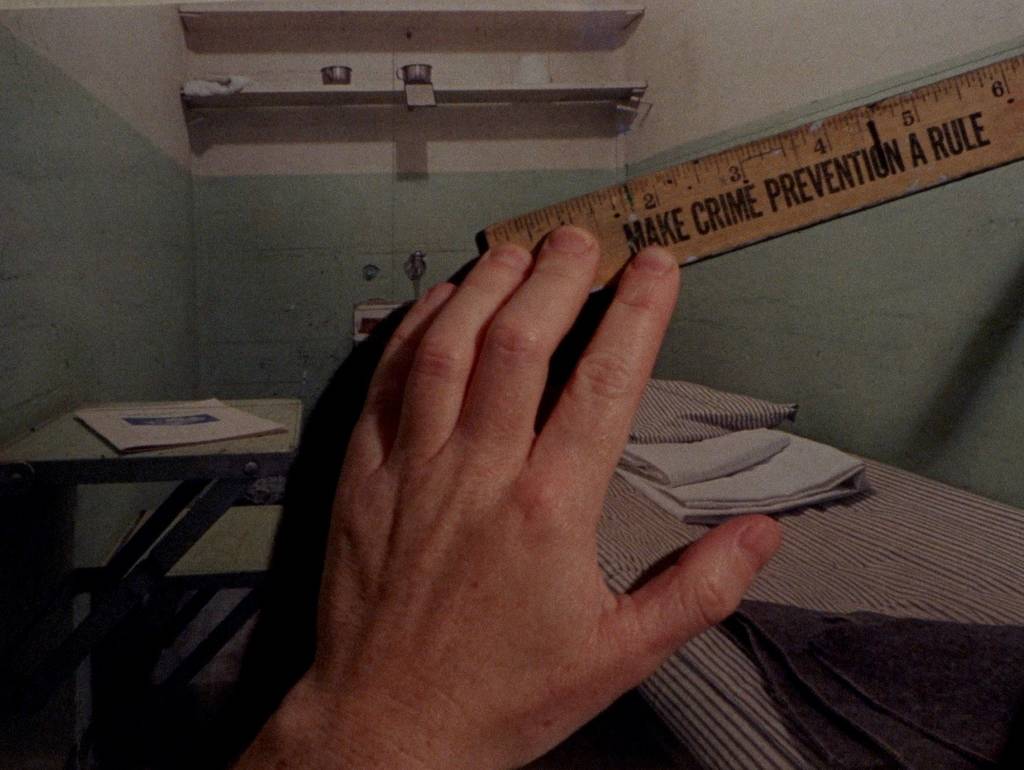
The Monkey Puzzle shorts block of Cucalorus features experimental shorts existing in the limbo between dream and nightmare. These shorts use surreal imagery to convey indescribable parts of the human experience or fears we don’t dare speak of. This review covers the first five short films in the Monkey Puzzle block in the order they were aired at Cucalorus 2023.
Zac Ivey’s Incident 4 fits squarely in the recent analog horror film trend: a cinematic successor to the alternate reality games (ARGs) and creepypastas of the early twenty-first century. Taking clear inspiration from Marble Hornets, The Blair Witch Project, and especially Kane Pixel’s Backrooms, Incident 4 follows an unnamed man as he’s chased by an unseen being throughout a constantly shifting reality. The framing device of an old VHS tape and the handheld cinematography is a hallmark of analog horror; the now largely defunct technology holds both a nostalgic and eerie feeling. Coupled with the editing creating a feeling of clipping in and out of reality, the harrowing sound design and the seemingly endless, featureless hallway the man finds himself cornered in help make Incident 4 a solid atmospheric horror short.
Living Lessons in the Museum of Order tackles the idea of imprisonment for entertainment. By blending archival and recent footage of SeaWorld and Alcatraz, Malic Amalaya condemns California– and, by extension, all– entertainment empires built on the suffering of other beings. Juxtaposing tour audio from Alcatraz onto footage of the orcas at SeaWorld works to an unsettling degree; the only element more unsettling is promotional SeaWorld audio working just as well over tour groups at Alcatraz. The occasional audio distortions and VHS grain emphasize the unsettling realization that the descriptions of an aquarium tank and treatment plans for captive orca whales line up with a facility created to contain human beings that other human beings visit for fun. The desire and drive to profit off imprisonment and suffering–especially on stolen land, a point Amalaya highlights– are perverse ones. Living Lessons in the Museum of Order’s visuals and audio sample blend powerfully to convey the brutality of imprisonment as entertainment.
The Voice in Isabelle Fliess’s Office, an adaptation of Virgil Renfroe’s poem, is another solid atmospheric horror short. Director Jim Haverkamp builds on his previous works, notably When Walt Whitman Was a Little Girl, with a psychological edge. A woman comes to see Dr. Isabelle Fliess, a nod to Freud’s frequent collaborator Wilhelm Fliess, for cobwebs in her throat. The surrounding context for the visit appears in shots reminiscent of Maya Deren until the film takes a turn for the Cronenberg in its final moments. For a short, independent film, the body horror is fantastically effective and a stunning image to end on. While the film’s ideas are a little heady for its speedy runtime, The Voice in Isabelle Fliess’s Office serves its function as a bite-sized piece of body horror.
Technological innovation has made what was once considered myth or magic a reality. Voicemail centers itself around an idea of modern necromancy: voicemails from the deceased, a lasting, personal reminder of a loved one. A dozen participants submitted voicemails, which play and overlap one another over home videos. As more voicemails enter the sound design, the voices begin to converge in a cacophonous digital graveyard. This contrasts with the video footage playing over the voicemails, which evoke feelings of nostalgia and warmth. The melancholic balance works beautifully. Voicemails invites viewers to examine their relationship with mortality and appreciate the little, fleeting moments that make up human existence.
Finally, Three Stories from Southern Appalachia is a multimedia love letter to the foothills of the Appalachian Mountains. The short anthology blends Super 8 and 16mm footage of North Carolina’s Appalachian region with gorgeous animation and interviews to highlight the culture of Appalachia. The folk tale and the myth, visually depicted in overlapping grainy footage and hand-drawn animation, encapsulate this elusive sort of rural mysticism within Appalachian culture. The interview portion, a massive stylistic shift, manages not to feel out of place. Clarence and Dean Moseley, the interviewees, each narrate one of the fictional stories, but the true story of Clarence’s brother’s near-death experience doesn’t feel too far off from the tall tales. There’s a very special aura surrounding Three Stories from Southern Appalachia, created by a team that obviously knows and loves the insular, special culture inherent to the region.
Author Biography
Red Broadwell is a first-year film studies MA student at the University of North Carolina Wilmington. Their other work can be found at https://redbroadwell.journoportfolio.com/.



































